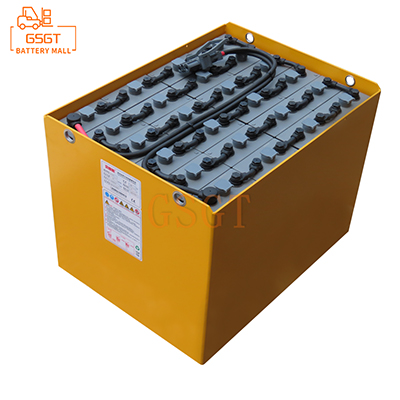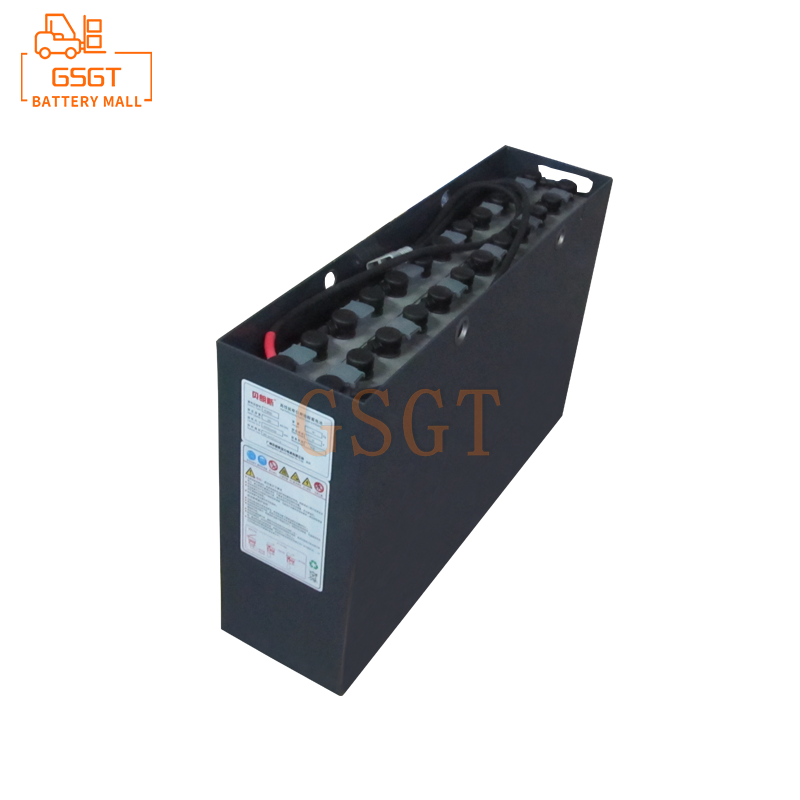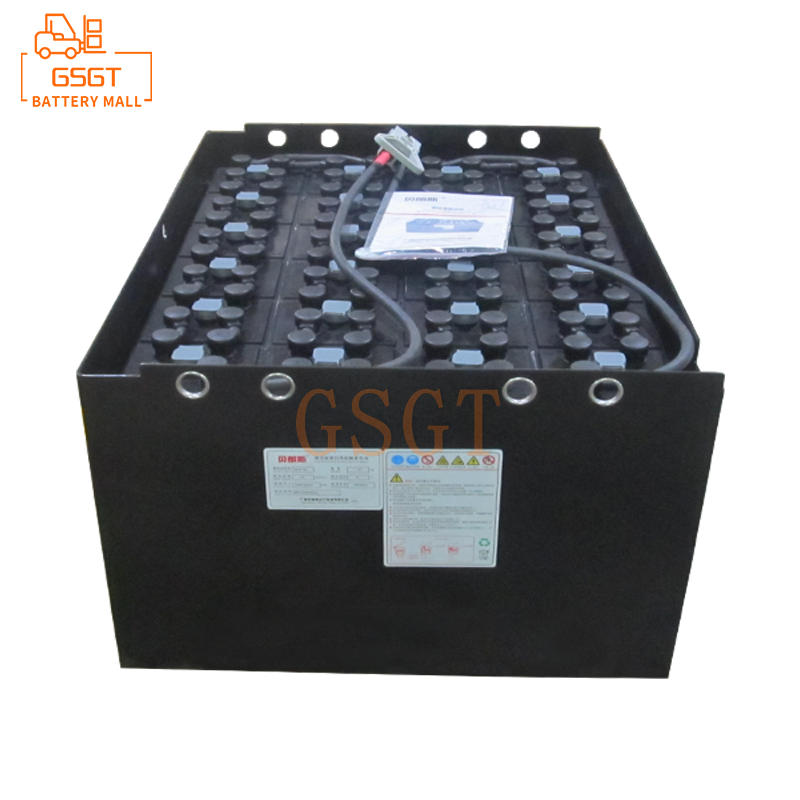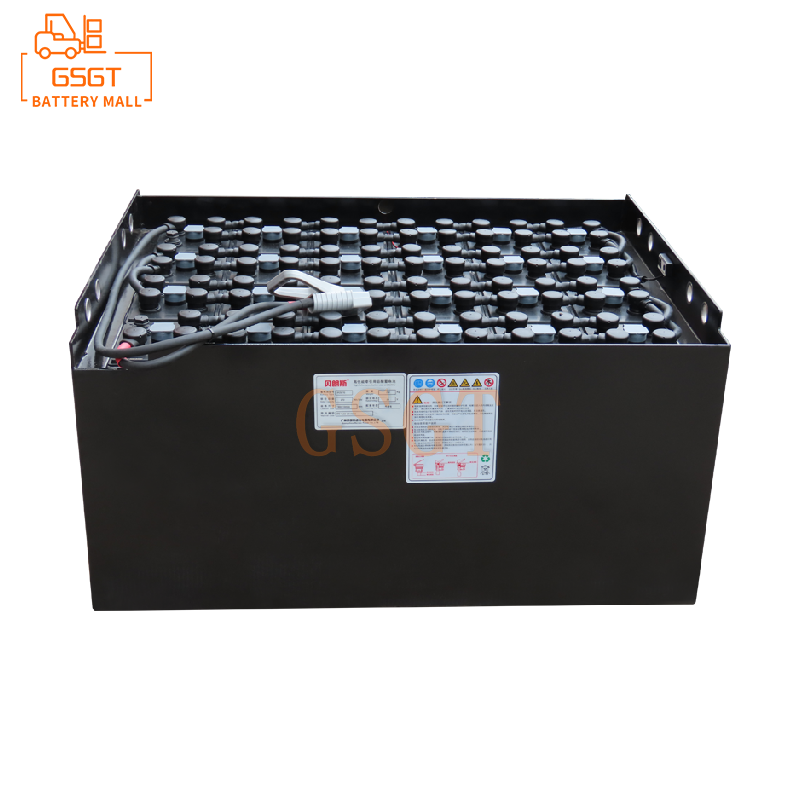Time:2025-05-06 12:00:47
Browse:627
1. Introduction
As a key material handling equipment in logistics, warehousing, industrial production and other fields, the selection of power sources for forklifts is of vital importance. Lead-acid batteries have long occupied an important position in the field of forklift power due to their unique advantages. With the development of the industry, the market pattern of forklift power is constantly evolving. An in-depth exploration of the current market situation of lead-acid batteries in the forklift field is of great practical significance for industry practitioners, investors, and all parties concerned about this field.
2. The Application Foundation of Lead-Acid Batteries in the Forklift Field
(1) Technical Principles and Characteristics
The working principle of lead-acid batteries is based on the electrochemical reaction between the active substances on the positive and negative plates and the electrolyte. When charging, electrical energy is converted into chemical energy and stored. When discharging, chemical energy is reconverted into electrical energy to power the forklift. It has the remarkable feature of mature technology. After more than a hundred years of development and improvement, its various performances have become relatively stable. For instance, it can operate normally within a wide temperature range, providing power support for forklifts from cold storage environments to hot outdoor venues. In low-temperature environments, although its performance will decline, through appropriate insulation measures, it can still meet the basic operation requirements of forklifts. Meanwhile, the output voltage of lead-acid batteries is stable, which is crucial for the smooth operation of forklifts. It can ensure that the speed and power output of the forklift are stable during the process of handling goods, and prevent the goods from being damaged due to power fluctuations.
(2) It is compatible with a wide range of forklift types
From light indoor warehouse forklifts, such as narrow-aisle forklifts used for goods handling in supermarket warehouses, to heavy container forklifts operating in ports and logistics parks, lead-acid batteries can be compatible with all of them. For light forklifts, small-sized and lightweight lead-acid batteries are usually adopted. These batteries are compact in size, can be flexibly arranged in the limited space of the forklift, and are relatively light in weight, which will not increase the overall load of the forklift too much. At the same time, they can provide sufficient energy to meet the frequent start-stop and short-distance cargo transportation needs of the forklift indoors. Heavy-duty forklifts, due to their need to handle several tons or even tens of tons of goods and their long operation time, have extremely high requirements for battery capacity and discharge ability. Large-capacity lead-acid batteries can store a large amount of electrical energy and have a strong continuous discharge capability, which can ensure that heavy-duty forklifts operate stably for a long time under heavy load conditions and complete high-intensity tasks such as loading, unloading and handling of goods.
3. Market Size and Growth Trends
(1) Global Market Situation
The global market size of lead-acid batteries for forklifts is huge. According to the research data from Bezhe Consulting, the global market capacity of lead-acid batteries for forklifts reached a certain scale in 2024. For a long time, with the vigorous development of the global logistics industry, the rise of e-commerce has driven the large-scale construction of warehousing and logistics centers, and the continuous demand for efficient material handling equipment in the manufacturing industry, the usage of forklifts has been constantly rising, thereby boosting the demand for lead-acid batteries. Over the past period of time, the global forklift lead-acid battery market has shown a stable growth trend. Although it has been impacted by emerging power technologies in recent years, its market size has continued to expand steadily due to its stable position in the mid-to-low-end forklift market and the new demands brought about by infrastructure construction and manufacturing expansion in developing countries. It is expected that by 2030, the global market size of forklift lead-acid batteries will further grow and reach a new height. During the forecast period, it will grow at a certain compound annual growth rate.
(2) Characteristics of the Chinese Market
As the world's largest producer and consumer of forklifts, China's forklift lead-acid battery market has unique characteristics. On the one hand, the application scenarios of forklifts in China are rich and diverse. From modern logistics parks in the developed eastern coastal areas to the emerging manufacturing bases in the central and western regions, forklifts are widely used. This has led to a strong demand for lead-acid batteries, and the market capacity of lead-acid batteries for forklifts in China also reached a considerable scale in 2024. On the other hand, China has a large number of domestic lead-acid battery manufacturing enterprises, forming a relatively complete industrial chain. These enterprises, through technological improvement and cost control, not only meet the demands of the domestic market but also actively expand overseas markets. From the perspective of growth trends, despite the impact of the development of new energy forklifts, in the coming years, due to the continuous existence of market demand for mid-to-low-end forklifts and the irreplaceability of lead-acid batteries in specific scenarios, the Chinese forklift lead-acid battery market will still maintain a certain growth rate. However, with increasingly strict environmental protection policies and the maturation of new energy technologies such as lithium batteries, its growth rate may gradually slow down.
4. Market Competition Pattern
(1) Competitive Strategies and Differentiation
1. ** Technological Innovation ** : Various enterprises have been increasing their investment in research and development, dedicated to enhancing the performance of lead-acid batteries. For instance, some enterprises have enhanced the energy density of batteries by improving their internal structure and adopting thinner plate designs, enabling forklifts to operate for longer periods and distances after a single charge. Some enterprises have developed fast charging technology, significantly reducing the charging time of lead-acid batteries, enhancing the utilization efficiency of forklifts, and meeting users' demands for rapid turnover of forklifts.
2. ** Product Customization ** : To meet the specific needs of different users, the enterprise offers customized lead-acid battery products for forklifts. For forklifts operating in cold storage environments, enterprises will develop batteries with better low-temperature performance. By optimizing the electrolyte formula and the insulation design of the battery casing, they ensure that the batteries can still work normally at low temperatures. For some places with high environmental protection requirements, enterprises have launched low-pollution and low-emission lead-acid battery products, reducing the environmental impact of batteries during use.
3. ** Brand and Service ** : Establishing a good brand image and providing high-quality after-sales service are also important means for enterprises to compete. Well-known brands often gain more trust from users. Enterprises enhance brand awareness by participating in various industry exhibitions, holding product promotion activities and other means. At the same time, strengthen the construction of the after-sales service network, provide users with battery repair, replacement and other services in a timely manner, solve users' worries, and improve users' satisfaction and loyalty.
5. Driving Factors and Limiting Factors
(1) Driving Factors
1. ** Growth in Forklift Market demand ** : The recovery and development of the global economy have driven the prosperity of industries such as manufacturing and logistics warehousing. The demand for forklifts in these industries continues to increase. Whether it is the construction of new factories and warehouses or the upgrading of equipment by existing enterprises, it has brought broad development space to the forklift lead-acid battery market. For instance, with the rapid development of the e-commerce industry, large-scale logistics distribution centers have been emerging one after another. These distribution centers require a large number of forklifts for the transportation and storage of goods, which directly boosts the demand for lead-acid batteries in forklifts.
2. ** Advantages of Lead-acid Batteries ** : As mentioned earlier, lead-acid batteries have mature technology, relatively low cost, high safety, and a complete recycling system. For some small and medium-sized enterprise users with limited budgets and not particularly high requirements for forklift performance, lead-acid battery forklifts are an extremely cost-effective choice. Its relatively low procurement and usage costs enable such enterprises to meet the demands of material handling with lower investment. Meanwhile, a complete recycling and utilization system also conforms to the current major trend of environmental protection, reducing the concerns of enterprises in battery disposal.
(2) Limiting Factors
1. ** Environmental pressure ** : The production and recycling of lead-acid batteries involve heavy metals such as lead. If not handled properly, they may cause pollution to the environment. With the enhancement of global environmental awareness and the increasingly strict environmental regulations, lead-acid battery enterprises are facing huge environmental protection pressure. Enterprises need to invest a large amount of funds in the construction of environmental protection facilities and technological improvements to ensure that the production and recycling processes comply with environmental protection standards, which to a certain extent increases the production costs of enterprises.
2. ** Competition in Emerging Power Technologies ** : The application of emerging power technologies such as lithium-ion batteries and hydrogen fuel cells in the forklift field is gradually increasing. Lithium-ion batteries have advantages such as high energy density, fast charging speed and long service life, which have attracted the attention of more and more high-end forklift users. Hydrogen fuel cells have advantages such as zero emissions and long driving range. They have great application potential in some specific scenarios with extremely high environmental protection requirements, such as warehousing and logistics in the food and beverage industry. The development of these emerging power technologies poses a serious threat to the market share of lead-acid batteries in the forklift field.
6. Market Prospect Outlook
(1) Short-term Market Trends
In the short term, lead-acid batteries will still dominate the forklift sector. On the one hand, the demand for lead-acid batteries in the mid-to-low-end forklift market remains strong. The continuous expansion of infrastructure construction and manufacturing in developing countries will continue to drive the demand for lead-acid battery forklifts that are affordable and stable in performance. On the other hand, lead-acid battery enterprises can enhance the competitiveness of their products to a certain extent through technological innovation and product upgrading, and meet the market demand for further improvement in their performance. For instance, in some small logistics enterprises and manufacturing factories that are sensitive to costs and have relatively fixed working environments, lead-acid battery forklifts will remain the preferred material handling equipment due to their lower total cost of ownership.
(2) Long-term Development Trends
In the long term, as environmental protection requirements continue to rise and emerging power technologies become increasingly mature, the market share of lead-acid batteries in the forklift sector may gradually be eroded. However, this does not mean that lead-acid batteries will be completely phased out. In specific scenarios, such as small storage sites where cost is extremely sensitive and battery performance requirements are relatively low, as well as some forklift application scenarios with low usage frequency, lead-acid batteries will still continue to play a role due to their cost advantages and technological maturity. Meanwhile, if lead-acid battery enterprises can increase their investment in environmental protection technologies and the research and development of new materials, further enhance product performance, and reduce environmental pollution risks, they may also find new development opportunities in future market competition and form a long-term coexistence and complementary development market pattern with emerging power technologies.

$3405

$1060

$5140

$5030

MESSAGE
Professional And Efficient
Security
Affordable Price
Professional Services